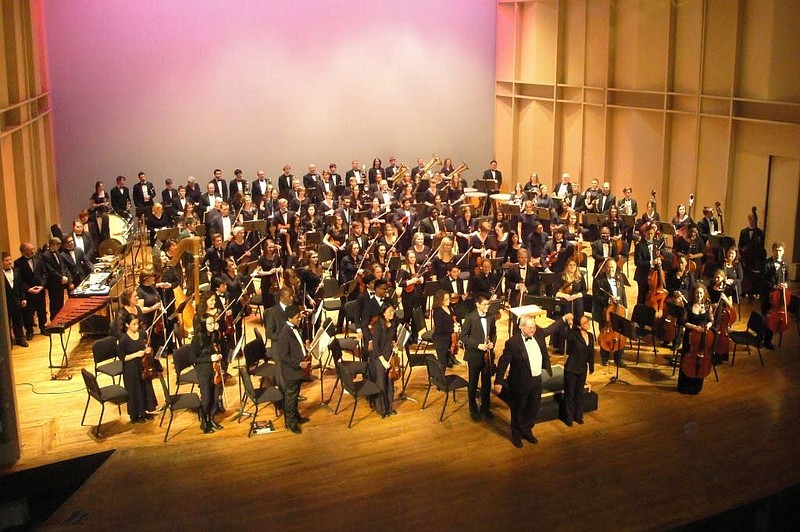Opening night of the Chattanooga Symphony & Opera's new season each year is always a welcome and exciting event. If Thursday evening's concert at the Tivoli Theater was any indication of what we can expect from this fine musical ensemble this year, we can all look forward to an especially rewarding and entertaining series of orchestral and chamber music performances; both traditional and innovative in design and content.
One of the most interesting and engaging elements of this initial concert – and indeed, of most of this season's concert programs - was that it featured both traditional and beloved classics, and new music of our own time; in this case, by American composer Joan Tower. Composed in 1989 and entitled Fanfare for the UnCommon Woman No. 2, Tower's piece was inspired by Aaron Copland's Fanfare for the Common Man (from 1942). The CSO brass and percussion sections delivered an exciting and bracing performance of this intense yet intricate work.
And, what better way to begin a new season than with a fanfare? Fanfares have always been associated with brass and percussion instruments. For as far back as anyone can remember, trumpet and drums (in some form or other) have been employed to mark auspicious occasions, announce the arrival of important dignitaries, and even communicate information across long distances (the original wireless communication!). As these simple, functional signals evolved, composers of art music increasingly integrated their stylistic characteristics in their own compositions.
Joan Tower's Fanfare is a wonderful example of just how far this compositional style has evolved over the last 700 years or so. And, in part because of its brevity (3:30), it also offers a unique opportunity for audiences to become better acquainted, and perhaps a bit more comfortable, with 21st century compositional styles in general.
After an opening flourish of percussion, we hear the composer presenting the listener with a few brief melodic and rhythmic fragments in the brass, which she then proceeds to develop and embellish in interesting ways. In effect, we hear the mind of the composer essentially "working out" various permutations of these short fragments. Yes, there is some complexity here, and it is rare that works of this kind can be fully appreciated on the basis of one hearing (actually, the same could easily be said of just about any work by Brahms or Beethoven). But, repeated listening to works of this type can, and often do well reward the attentive and musically adventurous listener. (And, who doesn't want a little more adventure in their lives?!) As with much modern music, this is intended for the mind as well as the heart.
The first half of the concert then concluded with a exceptional performance of one of the major orchestral showpieces in the repertoire, Richard Strauss' 1889 tone poem, Don Juan. Tone color and heroic melodies abound in this extraordinary work, and the orchestra, under the steady and inspired leadership of Conductor Kayoko Dan, hit the ground running, so to speak, in this, their first virtuoso performance of the season.
The final work on the program was a wonderfully passionate and committed performance of the well-known Piano Concerto No. 2 by Serge Rachmaninoff. Prize-winning pianist Ning An was the outstanding soloist, demonstrating exceptional dynamic range and expression. He rewarded the enthusiastic and much deserved applause with a moving solo performance of a Rachmaninoff Prelude for piano.
During the course of the coming CSO season, we will be treated to the music of six living composers on the Masterworks and Chamber Music series. Kayoko Dan is to be commended for this kind of innovative programming. We, the listeners, will be the beneficiaries.
Review author Douglas Hedwig was a trumpeter with the Metropolitan Opera Orchestra in New York City for 27 years and also was on the faculty of The Juilliard School. He is Professor Emeritus of Music at The City University of New York and his compositions are published by Carl Fischer Music and TNR Music Publishers. He and his wife, Mimi, moved to Chattanooga in 2013.
